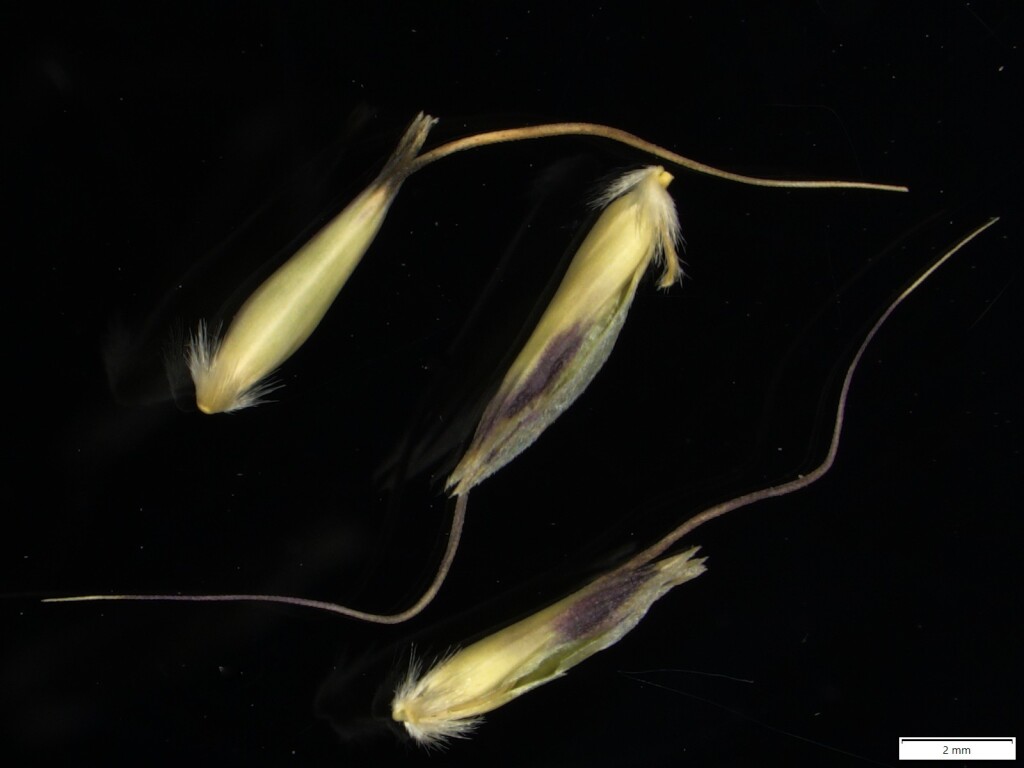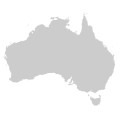Amphibromus pithogastrus
S.W.L.Jacobs & Lapinpuro Plump Swamp Wallaby-grassTufted perennial; culms to 1 m high. Leaves glabrous, smooth; blade flat or inrolled, to 20 cm long and 1.5–5 mm wide; ligule truncate to acute, 1.5–5 mm long. Inflorescence a slender, erect panicle, to 25 cm long. Spikelets 2–6-flowered, 8–15 mm long (excluding awns), green; glumes obtuse to acute, often erose at apex, the lower 3–5-nerved, 3–5.5 mm long, the upper 5–7-nerved, 3.5–7 mm long; lemma 4–7.5 mm long, smooth or minutely papillose, swollen in the lower part, gently constricted above the level of the grain, apical teeth 4 but the lateral pair often rudimentary so that the appearance is of 2 shallowly notched lobes, the sinus between them being 0.5–1.5 mm; awn 8–16 mm long, inserted 20–35% of the lemma length from the apex, column 3–5 mm long; palea from one-half to three-quarters as long as lemma. Flowers Oct.–Dec.
VVP, Gold, CVU, DunT, NIS, HSF, HNF. Also NSW. A rare species of shallow, seasonally inundated depressions (e.g. gilgais) on water-retentive clay soils supporting grasslands and grassy woodlands. Known from near Mansfield and scattered occurrences to the south and west (e.g. Yea, Heathcote, Craigieburn, Beaufort, Dunkeld, Casterton).
Walsh, N.G. (1994). Poaceae. In: Walsh, N.G.; Entwisle, T.J., Flora of Victoria Vol. 2, Ferns and Allied Plants, Conifers and Monocotyledons, pp. 356–627. Inkata Press, Melbourne.
 Spinning
Spinning


